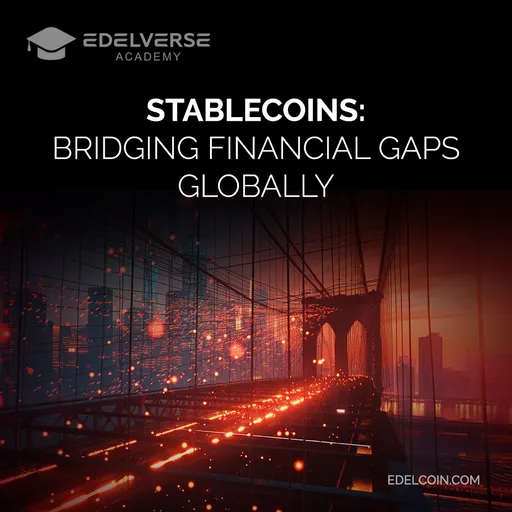
Centralized vs. Decentralized Stablecoins
A Risk Assessment with Edelcoin's Hybrid Model
Stablecoins have emerged as a cornerstone of the cryptocurrency market, offering the promise of stability amidst the notorious volatility of the crypto world. Broadly, stablecoins can be categorized into centralized and decentralized models, each with its own set of advantages and risks. Edelcoin, with its unique model, offers a fresh perspective on this dichotomy. We will delve into the risks associated with both centralized and decentralized stablecoins and explore how Edelcoin's unique model addresses these challenges.
Centralized Stablecoins: Overview and Risks
Overview: Centralized stablecoins are typically issued by a single entity or organization and are backed by reserves held in traditional bank accounts or other financial institutions. Examples include Tether (USDT) and USD Coin (USDC).
Risks:
- Central Point of Failure: Being centralized, these stablecoins are vulnerable to regulatory clampdowns, organizational mismanagement, or financial issues faced by the issuing entity.
- Transparency Concerns: There have been instances where the reserves backing these stablecoins were not fully audited, leading to doubts about their actual backing.
- Frozen Assets: Centralized entities have the power to freeze or seize assets, which can be problematic for users who value financial sovereignty.
Decentralized Stablecoins: Overview and Risks
Overview: Decentralized stablecoins operate without a central authority. Their stability is often achieved through algorithms, smart contracts, or collateralization with other cryptocurrencies. DAI is a well-known example of a decentralized stablecoin.
Risks:
- Collateral Volatility: These stablecoins are often over-collateralized with other cryptocurrencies, which can be volatile. Significant price drops can lead to liquidation events, destabilizing the stablecoin's peg.
- Smart Contract Vulnerabilities: Being based on smart contracts, they are susceptible to bugs or exploits, which can lead to loss of funds.
- Complexity: The mechanisms that keep these stablecoins stable can be complex, leading to challenges in understanding and potential unforeseen issues.
Edelcoin's Hybrid Model: Bridging the Gap
Edelcoin stands out with its unique approach, blending the strengths of both centralized and decentralized models:
- Asset-Backed Stability: Edelcoin is backed by a basket of precious and base metals, providing intrinsic value and stability. This real-world asset backing offers a tangible value proposition compared to purely algorithmic stablecoins.
- Decentralized Issuance: While it has a centralized aspect in its asset backing, its issuance on the Ethereum blockchain and plans for other EVM-compatible chains ensure decentralization in its operation and transferability.
- Regulatory Compliance: Edelcoin operates within a Swiss-compliant framework, ensuring it meets high regulatory standards, addressing the transparency concerns often associated with centralized stablecoins.
- Overcollateralization: Each Edelcoin is overcollateralized by pre-existing metals, ensuring robustness against potential market fluctuations.
Conclusion
While both centralized and decentralized stablecoins have their merits and risks, hybrid models like Edelcoin offer a balanced approach, harnessing the strengths of both worlds. By combining real-world asset backing with decentralized issuance and a commitment to transparency and compliance, Edelcoin presents a compelling model for the future of stablecoins in the crypto landscape.
Contents





